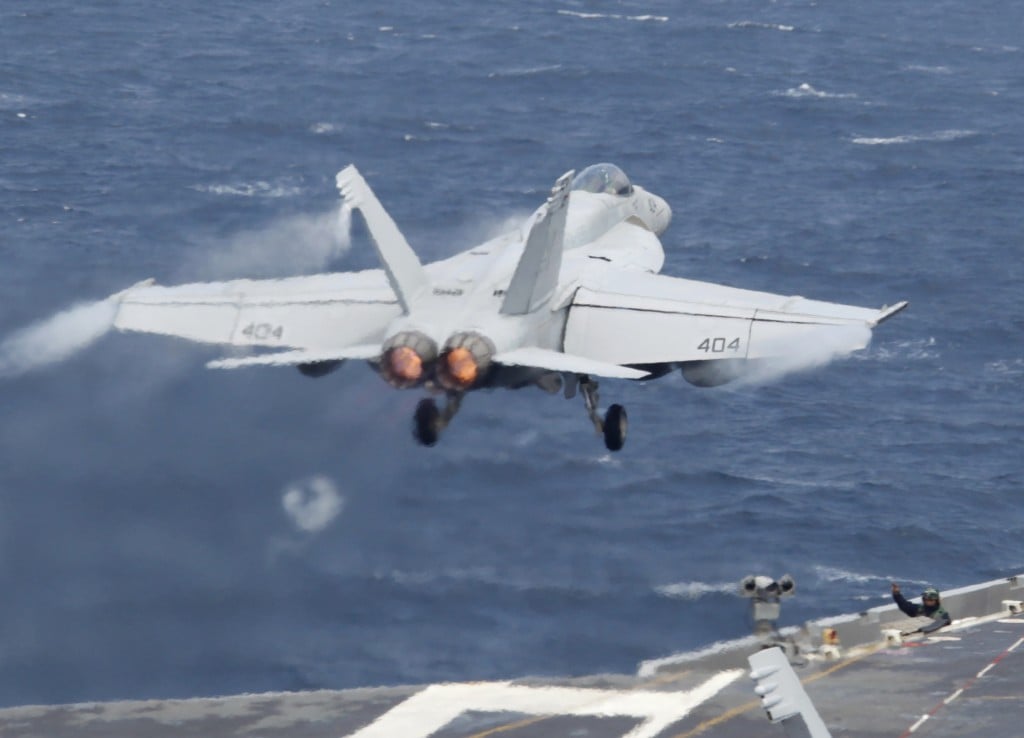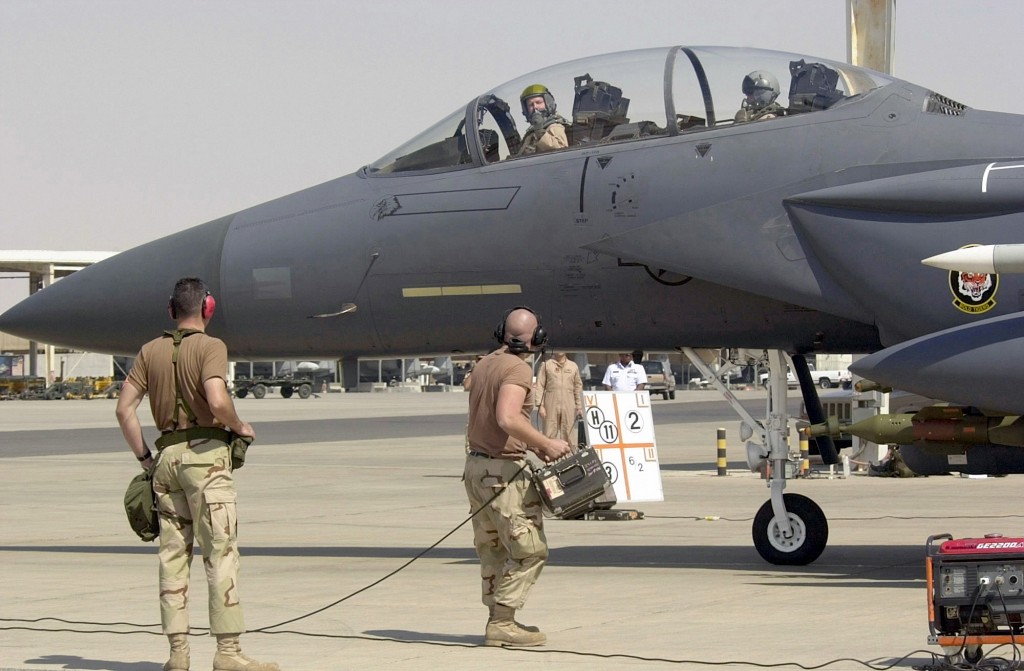How To Defeat ISIL: It’s All About The Strategy
Posted on
As the NATO alliance’s panjandrums meet in Wales and debate the best ways to destroy ISIL and make Vladimir Putin’s Russia stop doing whatever it wants in Ukraine, we offer this schemata for defeating ISIL. It’s penned by Dave Deptula, the man who ran the air war against Al Qaeda and the Taliban in Afghanistan during Operation Enduring Freedom. Take note especially of his argument about the ability of aircraft to operate effectively today without boots on the ground to help find and fix the target. The Editor.
Those who oppose ISIL — the so-called “Islamic State” — must grasp the fact that no amount of kinetic force will make up for an inadequate plan to crush it. American power, both within and without the battlespace, will only be realized when power is guided by a comprehensive, coherent and realistic strategy.
To date, much of the public discussion is focused on means — vice the ways and ends — of the use of force. In discussions of military campaigns, many often focus on the tools through which operations are prosecuted: elements like boots on the ground, air power, or sea power. However, such assessments ignore the strategic principles that guide their use.
Looking at the present set of circumstances in Iraq, current US objectives are tactical at best, and center on protecting American outposts and conducting humanitarian relief. American aircrews are striking a very limited set of targets to facilitate these objectives. This is a far different mission set than what is called for to render IS ineffective.
The self-proclaimed “Islamic State (IS)” presents the world with a moral crisis. IS cannot be reasoned with— they must be terminated. So let’s define that as our desired strategic end state and move forward rapidly to create a coalition, and a campaign plan that will succeed in accomplishing that. The operational objectives are 1) halt any further expansion of IS influence in the region of Iraq and Syria; 2) paralyze IS leadership, command, and control elements, and 3) render IS operations ineffective.
To accomplish these objectives we need to begin with an aggressive air campaign — where airpower is applied like a thunderstorm, not a drizzle; 24/7 constant over-watch, with force used against every move of IS forces and personnel. We’ve done this before — Desert Storm where the opening 24 hours witnessed over 2.500 aircraft missions focused on a simultaneous attack across the breadth and depth of the entire country of Iraq—an attack from which Saddam Hussein’s forces never recovered. IS won’t require that level of effort.
A more applicable analogy is the dramatically successful first three months of OEF where the United States provided airpower that in conjunction with indigenous forces on the ground—the Northern Alliance—allowing us to meet our critical national security objectives in less than 90 days. That combination resulted in the removal of the Taliban Regime; the establishment of a government friendly to the United States, and the elimination of the Al Qaeda terrorist training camps. We should have departed Afghanistan at that time with a warning of a return engagement if needed.
The initial attacks of “Operation Restore Stability” don’t need U.S. boots on the ground—that’s exactly what IS has stated they want as that would introduce a vulnerability that has dogged us in both Iraq and Afghanistan. We didn’t have U.S. ground forces engaged for the first 40 days of the 43-day Desert Storm campaign, nor the Kosovo campaign, nor many during the first campaign of OEF where we were dramatically successful.
Boots on the ground are not required to conduct effective airstrikes. Today, virtually every combat aircraft brings some degree of precision intelligence, surveillance, and reconnaissance (ISR) to the fight, allowing airmen the ability to find, fix, and finish a target without ground assistance. In some circumstances ground-based ISR may be of use, but it is not required to halt IS from further movement, or to begin 24/7 operations to paralyze them. We need to project power — not vulnerability — and that’s what airpower is tailor-made to do.

If the President chooses to expand US involvement in the region, it should not be to prop up a new Iraqi regime; we should be the leader of an international coalition sanctioned by the United Nations to negate IS. Where has the United Nations been during the revelation of the moral crisis of IS? In April 1991 they passed United Nations Security Council Resolution 688 that:
- Condemns the repression of the Iraqi civilian population;
- Demands Iraq end its repression, and respect the human and political rights of all Iraqi citizens;
- Insists Iraq allow immediate access to international humanitarian organizations to all in need of assistance;
- Requests UN to pursue humanitarian efforts…[for] the Iraqi civilian population and in particular the Kurdish population suffering from the repression inflicted by the Iraqi authorities;
- Demands that Iraq cooperate with the UN to these ends.
It takes less than a minute to replace “Iraq” with “IS” so let’s do it, vote and move on. That resolution provided the rationale for the first no-fly zone. That no-fly zone — originally Operation Provide Comfort, and later Operation Northern Watch — defined how airpower fundamentally changed the military calculus between the Kurds and Saddam, and as a result changed the political calculus of Iraq. It was the connection between Northern Watch and the Kurds that resulted in “Kurdistan” doing so well relative to the rest of Iraq.
The success of “Operation Restore Stability” will hinge upon the strategy developed to guide the application of national power. Whether using airpower or any other tool, our civilian leadership and operational commanders must consider their involvement from a robust ends, ways, and means perspective.
Are the desired end results realistically achievable? Do they overreach what is necessary for our security or commit our forces to vaguely defined long-term objectives? What combination of force will best secure desired results, while minimizing the projection of vulnerability and liability? Is there sufficient capacity and will to pursue the strategy until objectives are met? Answering these questions is far from simple, but the results will spell the difference between success and failure.
Air Force Lt. Gen. Deptula, (Ret.), was the offensive air campaign planner for Operation Desert Storm; the Joint Task Force Commander for Operation Northern Watch; and the Commander of the Combined Air Operations Center for the opening phase of Operation Enduring Freedom. He is the Dean of the Mitchell Institute for Aerospace Studies and a member of the Breaking Defense Board of Contributors.
Subscribe to our newsletter
Promotions, new products and sales. Directly to your inbox.

